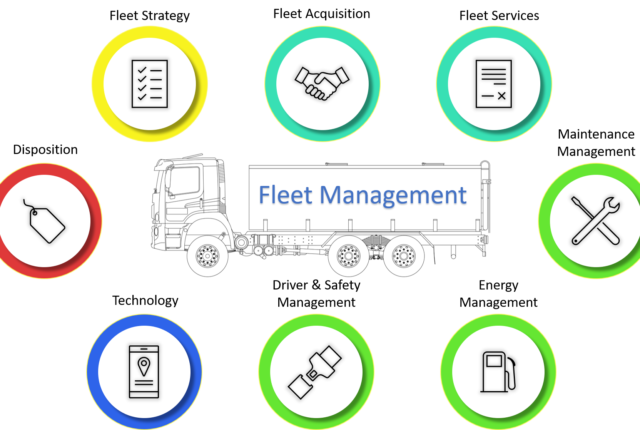Streamlining Field Services with Intelligent Telematics Solution
Background
Field Service companies have the unique challenge of managing a workforce that is always on the move while needing the nimbleness to quickly respond to unplanned events. These challenges can be broadly categorized into two main areas:
Managing a Mobile Workforce
One of the primary challenges for field service companies is effectively managing a mobile workforce. With technicians working away from the office, tracking and coordinating their activities can be a daunting task. Lack of visibility into daily operations can lead to inefficiencies, delays, and poor customer satisfaction. Transparency is crucial for building and maintaining strong customer relationships with customers.
Navigating Unplanned Events
Even with meticulous planning, field service operations are often subject to unplanned events which can impact the team’s ability to arrive on time for service appointments and, at times, create a cascading disruption to the remaining service appointments. These unexpected occurrences, such as adverse weather conditions, traffic delays, vehicle breakdowns, and last-minute customer cancellations or emergencies that require immediate attention, necessitate rapid adjustments to the day’s schedule and resource allocation.
Operational Improvements through Telematics
Telematics systems, especially with AI-enabled dashcams, offer a powerful solution for field service companies to enhance efficiency and productivity across their operations. By leveraging real-time data and insights, telematics can drive significant improvements in the following areas:
Driver Monitoring and Coaching
Telematics solutions with dashcams offer field service companies powerful tools for driver monitoring and coaching, significantly enhancing fleet safety and efficiency. By tracking real-time driving behaviors such as speed, acceleration, braking patterns, and cornering, managers can identify high-risk drivers and pinpoint specific areas for improvement. This data-driven approach allows for personalized coaching sessions, where drivers can receive feedback on their performance and learn techniques to improve their driving habits. Additionally, telematics systems can provide in-cab alerts to drivers in real-time, prompting immediate corrections for unsafe behaviors. According to a Together for Safety Roads (TSR) survey of over 500 professional drivers, 25% of surveyed drivers indicated they avoided a crash due to in-cab alerts. This proactive approach not only reduces the risk of accidents but also helps lower fuel consumption, minimize vehicle wear and tear, and improve overall operational efficiency. By fostering a culture of safety and continuous improvement, field service companies can enhance their reputation, reduce insurance costs, and ultimately deliver better service to their customers.
Fuel Efficiency
Real-time vehicle tracking is a powerful tool for optimizing routes, which helps minimize
unnecessary mileage and reduce fuel consumption. By monitoring driving patterns and fuel usage data, fleet managers can identify areas of inefficiency and implement corrective measures, including enhanced driver training based on the telematics data. Telematics systems play a crucial role in this process by providing real-time alerts for behaviors such as excessive idling and aggressive driving, allowing for prompt interventions to curb fuel wastage. Additionally, these systems offer data-driven insights into utilization patterns and highlight opportunities for further improvement in fuel efficiency across the fleet. Based on research from Telematics Wire Market, fleet owners who effectively use telematics reduce their fuel costs by as much as 14%.
Predictive Maintenance
Telematics systems play a crucial role in vehicle maintenance by enabling proactive strategies through real-time monitoring of fault codes and alerts. This allows for timely intervention, preventing minor issues from developing into major, costly repairs. By leveraging vehicle usage data, these systems facilitate predictive maintenance schedules, helping to keep assets in optimal condition and significantly reducing the risk of unexpected breakdowns and associated downtime. The real-time diagnostics and alerts provided by telematics enhance overall service process efficiency. Furthermore, analysis of telematics data helps identify recurring issues across the fleet, enabling managers to implement proactive measures that prevent future downtime and improve long-term vehicle reliability.
Service Delivery
Customers highly value punctuality and expect services to be delivered within the committed timeframe. Telematics systems provide real-time visibility into the location and status of field technicians, allowing for accurate estimation of arrival times (ETAs). This transparency empowers companies to keep customers informed about any delays or changes in schedule, fostering trust and managing expectations effectively. Additionally, telematics data enables optimized routing and dispatch, minimizing travel times and ensuring technicians arrive at job sites promptly.
According to a ReachOut survey, 89% of customers want to see modern, on-demand technology applied to their technician scheduling, and nearly as many customers would be willing to pay a premium for it.
Billing and Reporting
Telematics systems streamline billing processes by automating data collection and reporting. Field service companies can leverage telematics to capture accurate information on technician hours worked, mileage driven, and other job-related metrics. This data can be integrated into billing systems, ensuring customers receive precise invoices based on actual service delivery. Furthermore, comprehensive reporting capabilities provide valuable insights into operational performance, enabling data-driven decision-making and continuous improvement.
Customer Communications
Effective communication is vital for maintaining strong customer relationships. Telematics facilitates improved communication by enabling real-time updates on job progress, delays, or any issues encountered. Automated notifications and alerts to dispatchers/central office staff can keep customers informed throughout the service delivery process, fostering transparency and building trust. Additionally, telematics data can support post-service follow-ups, reviews, and feedback collection, providing opportunities for continuous improvement and customer retention.
By leveraging telematics solutions, field service companies can deliver a superior customer experience, characterized by punctuality, transparency, and open communication. These benefits not only enhance customer satisfaction but also contribute to building long-lasting relationships and a positive brand reputation.
Future Telematics Trends
The future of telematics is poised to be shaped by the integration of cutting-edge technologies, such as artificial intelligence (AI) and machine learning.
AI and Machine Learning
AI
The advent of AI stands as a transformative force, elevating the discipline far beyond conventional GPS tracking. AI-driven telematics and dashcams systems are in the early stages of creating a fundamental shift in the business and operational insights from telematics data. As an example, AI can provide detailed insights into driver behavior through analysis of factors like acceleration patterns, braking habits, and traffic rule adherence. This enables field services companies to identify high-risk behaviors and implement targeted training programs, enhancing both safety and operational efficiency.
Machine Learning
Machine learning enables more sophisticated analysis of vast amounts of data collected by telematics systems. This technology allows for more accurate predictions of maintenance needs, optimized routing based on complex factors, and personalized driver coaching programs that adapt to individual performance patterns over time.
Looking ahead, continued advancements in AI and Machine Learning, the increasing availability of real-time data, and the evolution of connectivity technologies from 5G to 6G networks will further enhance the capabilities of telematics systems, enabling even more responsive and data-intensive applications in the future.
Refer to our blog, “On the Road: Exploring the Synergy of Machine Vision, AI, and Dashcams for Fleet Safety,” for additional information of these emerging technologies.
Conclusion
Telematics systems have emerged as a key critical success factor for field service companies, addressing the unique challenges of managing a mobile workforce and navigating unplanned events. By leveraging real-time data and advanced technologies, telematics offers comprehensive improvements across various operational aspects, including driver monitoring and coaching, fuel efficiency, predictive maintenance, service delivery, billing and reporting, and customer communications.
As the field service industry continues to evolve, the integration of AI and machine learning with telematics promises even greater advancements. These technologies will enable more sophisticated data analysis, predictive capabilities, and personalized solutions, further enhancing operational efficiency and customer satisfaction. Field service companies that embrace and effectively implement telematics solutions will be well-positioned to thrive in an increasingly competitive and dynamic market, delivering superior service while optimizing their operations for long-term success.
About Positioning Universal
Established in 2013, Positioning Universal is the leading global provider of off-the-shelf and customizable mobile IoT devices and GPS vehicle and asset monitoring solutions. Our Systems Integration (SI) services deliver turn-key solutions for smooth IoT implementations, leveraging our team’s extensive industry knowledge.
With a deep understanding of IoT technologies, we guide companies in designing and deploying IoT solutions that meet their unique needs. Our comprehensive offerings, paired with best-in-class customer support, empower businesses with essential business intelligence to sustain a competitive edge in rapidly evolving markets.
Technology Profile:
AI-Powered Dashcams with Edge Processing to Enable Machine-Learning ADAS
Driven by a real-time high-performance edge processing GPU, our AI-powered dashcams enable machine-learning Advanced Driver Assistance Systems (ADAS) and can actively monitor up to 5 cameras simultaneously. This includes detecting triggerable events such as alerting the driver about pedestrians, identifying dangerous driving violations like running red lights and stop signs, and much more.
Telematics solutions using AI-powered dashcams with edge processing contribute to driver and public safety by capturing real-time footage and alerting drivers of potential hazards. With our cutting-edge technology, we are committed to fostering a safer driving environment and providing invaluable guidance and alerts in critical moments on the road.





